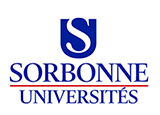MicroBE
People involved
Microfluidic of epilithic Biofilms : Impact of chlordecone
The main objective of this project is to highlight the effects of chlordéconne (CLD) on the physical properties of the biofilm in a controlled hydrodynamic context. Our hypothesis is that the accumulation of the pesticide by the community depends on the physical properties of the biofilm which are themselves conditioned by the hydrodynamic conditions to which the biofilm is exposed. We also believe that the CLD can alter the physical properties of the biofilm and induce a cooperative mechanism of compound fixation. To explore these hypotheses, we aim to set up a laboratory experiment to monitor in real time the biofilm development and measure its physical properties in situ under controled conditions. We will control the hydrodynamism, CLD concentration and perform biochemical and molecular analyzes at defined steps throughout the development of the microbial community in order to clarify the evolution of the system in a defined environmental context. We will compare the physical properties of both biofilms naturally subject to contrasting levels of pollution (ie adapted to pollution vs. non adated), in connection with the composition in extracellular polymers (EPS) and diversity. We will also estimate the impact of the CLD on these properties by subjecting a "non-adapted" biofilm to different levels of CLD.
Links to participants :
- Jean Perrin Laboratory (UMR 8237, UPMC): Nelly Henry et Philippe Thomen
- Team 4 BOREA reserach unit : Dominique Monti
- GTSI Université des Antilles et de la Guyane : Jean-Louis Mansot et Laurence Romana
- PREMICE Université de Pau et des pays de l'Adour : Béatrice Lauga


 This project is financed by the Convergence program at Sorbonne Universités (call: Emergence).
This project is financed by the Convergence program at Sorbonne Universités (call: Emergence).
Equipe 4 UMR 7208 BOREA, UMR 8237 LJP (Paris), GTSI (Pointe à Pitre), Plateforme PREMICE (Pau)

